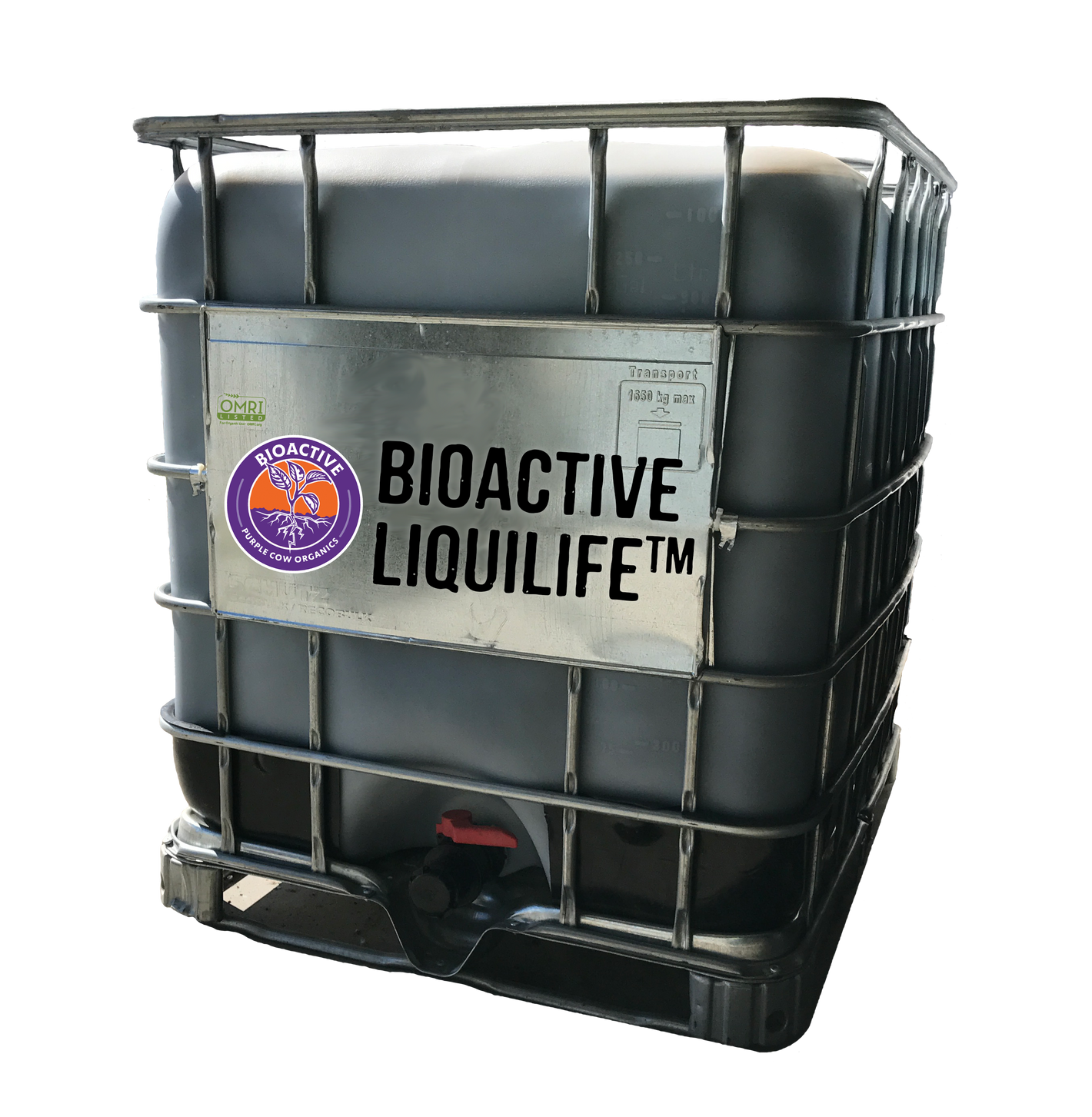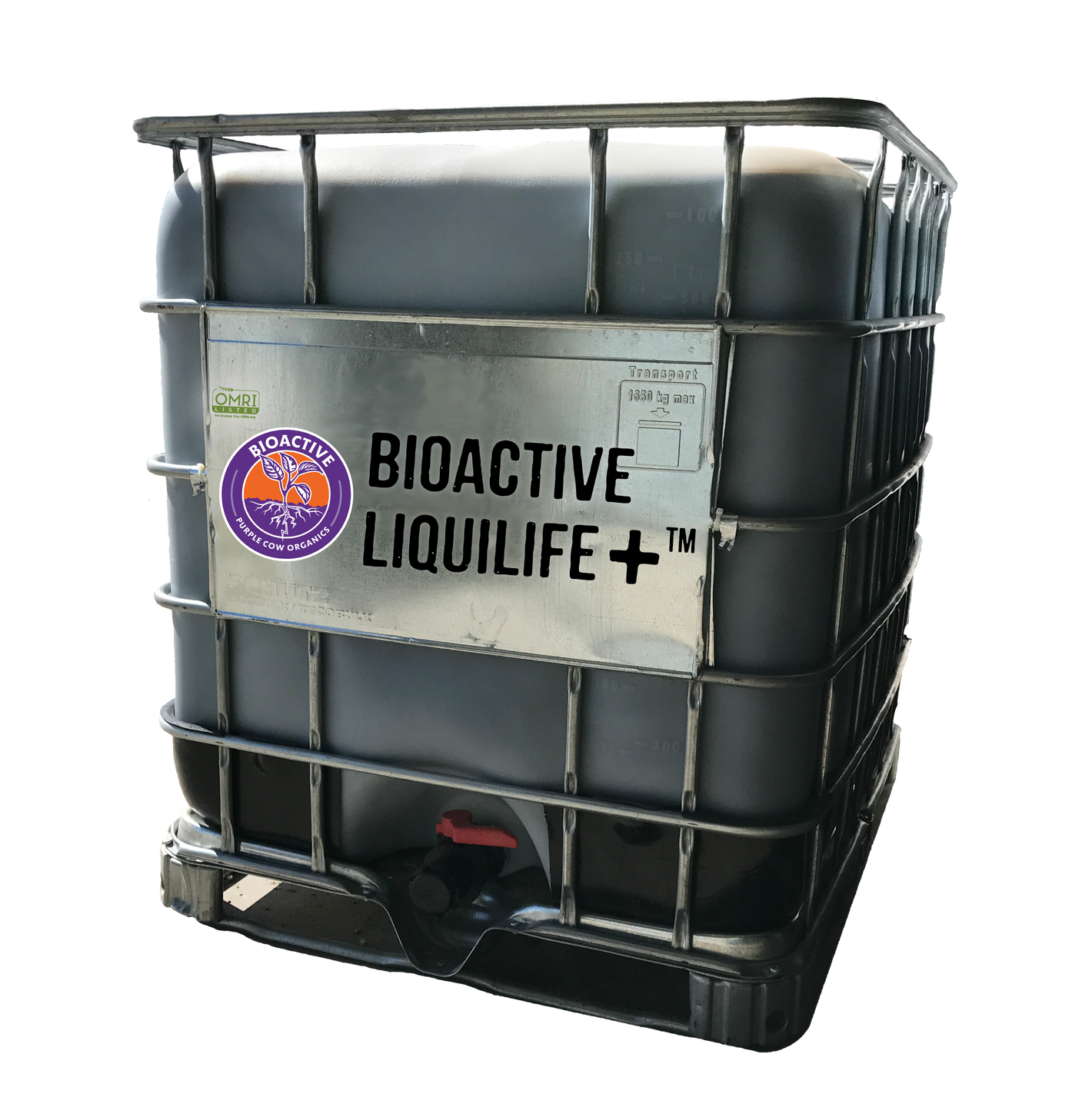Carbon comes in many forms.
Soil organic matter/carbon
Humates
Biochar
Molasses
BIOACTIVE™ Supercharger
Small particle carbon technology (Nano Technology)
Carbon is the building block for all life; in agriculture, it can come in many forms. The most critical thing to remember is that all fertility mixes are better when they have minerals, carbon, and biology together.

Building Soil Carbon
Building soil carbon isn't taught outside of getting a degree in Agronomy. Nevertheless, it's a complex and important function that immensely affects the health of our plants, soil, and planet.
Building organic carbon in the soil not only creates a healthier growing environment but also pulls excess carbon out of the atmosphere. Farmers and horticulturists can facilitate this process by using foliar applications for nutritional inputs.
Foliar applications can be used to increase soil carbon by making carbon more available to the leaf surface, which the plants will then sequester into the soil.
Four Steps to Better Soil
Photosynthesis
A 2-step endothermic reaction that occurs in the leaves. Energy from the sun is stored in the form of a simple sugar-glucose.
Resynthesis
Through myriad reactions, the glucose formed during photosynthesis is resynthesized to a wide variety of carbon compounds, secondary metabolites of carbohydrates, proteins, organic acids, waxes, oils, and more.
Carbon atoms can link together to form long chains, branched chains and rings to which other elements can join.
Carbohydrates provide energy for grazing animals, starch in grains provides nourishment for livestock and people.
Exudation
Estimates are that, depending on the crop, up to 60% of the plant's energy can be exudated through the roots during peak growing periods. In the simplest form, this is carbon being put back into the soil.
As food for microbes that in turn bring minerals back to the plant, these carbon compounds are essential to the creation of topsoil and are determined by the volume of plant roots per unit of soil and their rate of growth.
Humification
Adding organic carbon is one thing, keeping it there is another.
Organic carbon moves through various pools in the soil. Some are short-lived, and some last for centuries. Carbon additions need to be combined with land management practices that foster the conversion of relatively transient forms of organic matter to more stable complexes within the soil.
In the humification process, soil microbes resynthesize and polymerize labile carbon into high molecular weight stable humic substances. Humification cannot proceed unless there is a continuous supply of microbial energy.
If humification does not occur, the carbon exuded from the plants simply oxidizes and recycles back into the atmosphere as carbon dioxide.
Here again, diverse and robust biology is critical. Bacteria can consume the simple sugars, but it takes fungi to consume and process the oils and lipids essential for this humification process to occur.
The Benefits of Foliar
Growing with biology is incredibly important, not only for the health of your soil but for the health of your plant's as well.
Foliar applications have been shown to increase the energy plants can generate from photosynthesis. More productive plants can grow stronger root systems, which further enhances the work that microbes can perform in processing metabolites and exudates.
This, in turn, works to increase the nutrient density and yield of your crops.
BIOACTIVE LiquiLife™ and LiquiLife+™ (formerly CX-1 and CXPro) are broad-spectrum liquid biologicals from Purple Cow Organics that help to provide diverse biology to your plants and drive productivity. The more species of biology you add to your nutritional program, the more functions you'll bring to your crops.




